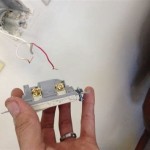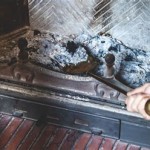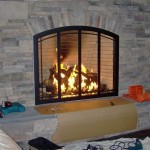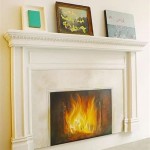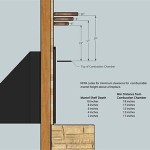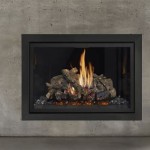Here's an article about fireplaces with mantles, following your specified guidelines:
The Enduring Appeal of Fireplaces With Mantles
Fireplaces, particularly those adorned with mantles, represent more than just a source of heat. They are focal points in living spaces, embodying warmth, tradition, and architectural elegance. The addition of a mantle elevates the fireplace from a purely functional element to a decorative centerpiece, offering opportunities for personal expression and adding significant aesthetic value to a home.
The history of the fireplace stretches back centuries, evolving from simple hearths used for cooking and heating to the sophisticated designs we see today. Mantles, initially functional ledges designed to catch smoke and protect combustible walls, gradually transformed into elaborate displays of craftsmanship and artistry. They became platforms for showcasing family heirlooms, artwork, and personal collections, further solidifying their role as integral components of a home's interior design.
Modern fireplaces with mantles encompass a vast range of styles, materials, and functionalities, catering to diverse tastes and architectural requirements. From traditional wood-burning fireplaces to contemporary gas or electric models, the integration of a mantle remains a consistent feature, serving both practical and aesthetic purposes. Understanding the various facets of fireplaces with mantles is crucial for homeowners seeking to enhance their living spaces with this timeless architectural feature.
Functionality and Design Considerations
While aesthetics play a significant role, the functionality of a fireplace and its mantle should not be overlooked. The primary function of a fireplace is to provide heat, and its design must adhere to safety regulations and building codes. Proper ventilation is essential for wood-burning fireplaces to ensure efficient combustion and prevent the build-up of harmful gases. Gas and electric fireplaces, while offering convenience and ease of use, also require adherence to specific installation guidelines.
The mantle itself serves multiple purposes. It provides a ledge for displaying decorative items, framing the fireplace and drawing the eye to its central location within the room. Furthermore, particularly in older homes, the mantle can serve a protective function, deflecting heat away from the wall and reducing the risk of fire hazards. The height and depth of the mantle are crucial considerations, impacting both its visual appeal and its practical utility. Considerations should be made for the type of heat source, preventing damage like melting or discoloration to decorative items placed on or close to the mantle.
When selecting a fireplace and mantle, consider the overall design of the room. The style, material, and dimensions should complement the existing decor and architectural features. A traditional brick fireplace with a carved wooden mantle might be ideal for a country-style home, while a sleek, minimalist fireplace with a concrete or metal mantle might be more appropriate for a modern, contemporary space. Thoughtful planning ensures that the fireplace and mantle seamlessly integrate into the room's design, enhancing its overall aesthetic appeal.
Material Choices and Their Impact
The materials used in constructing a fireplace and mantle significantly influence its aesthetic and functional characteristics. Brick, stone, wood, concrete, and metal are among the most common materials, each offering unique properties and visual appeal. Brick and stone offer durability, heat resistance, and a classic, rustic aesthetic, making them popular choices for traditional fireplace designs. Wood, particularly hardwoods like oak and maple, adds warmth and character to a room, providing a versatile material for crafting intricate mantle designs.
Concrete and metal are often favored in contemporary designs, offering a sleek, minimalist aesthetic. Concrete can be molded into various shapes and textures, providing a modern, industrial feel. Metal, such as steel or cast iron, adds a touch of sophistication and can be used to create clean lines and geometric forms. The choice of material should consider the desired aesthetic, the level of maintenance required, and the overall budget.
The choice of mantle material will also impact temperature resistance and proximity to the fire itself. For example, a delicate wood should be placed further away than heat-resistant materials like stone or concrete. The lifespan of the materials should be factored in, ensuring the structure withstands the constant heating and cooling cycles without cracking or deteriorating. Proper sealing and maintenance are crucial for preserving the beauty and longevity of the fireplace and mantle, regardless of the materials chosen.
Styles and Architectural Integration
Fireplaces with mantles come in a wide array of styles, ranging from classic and traditional to modern and contemporary. Traditional fireplaces often feature ornate carvings, intricate moldings, and decorative details, reflecting the craftsmanship of past eras. These fireplaces are often constructed from brick, stone, or wood, and are characterized by their grand scale and formal elegance. Common styles include Georgian, Victorian, and Federal, each with distinct architectural features.
Modern fireplaces, on the other hand, tend to embrace clean lines, minimalist designs, and a focus on functionality. These fireplaces often incorporate materials such as concrete, metal, and glass, creating a sleek, contemporary aesthetic. Contemporary fireplaces are often integrated seamlessly into the surrounding architecture, becoming an integral part of the room's overall design. Styles such as mid-century modern and industrial chic are increasingly popular in contemporary fireplace designs.
The architectural integration of a fireplace with a mantle requires careful consideration. The fireplace should be proportionate to the size of the room and should complement the existing architectural features. The style of the fireplace should align with the overall design aesthetic of the home, creating a cohesive and harmonious look. Whether renovating an existing fireplace or designing a new one, attention to detail and a thorough understanding of architectural principles are essential for achieving a successful integration.

Cooper Wood Fireplace Mantel Mantels Direct

Modern Ember Lenwood 48 Inch Wood Fireplace Mantel Surround Kit Unfinished Com

Fireplace Mantel 8 By 66 Long Corbels Included Solid Wood Pine Hand Hewn Customizable

Fireplace Mantel Wood N Finish Kit Walnut

Barnwood Fireplace Mantel The Collection
:max_bytes(150000):strip_icc()/sandandsisal-bdc76ad938a44d28ae9e23ef6c9fa331.jpg?strip=all)
17 Diy Fireplace Mantel Plans

65 Jim White Fireplace Mantel

Majorca Cast Stone Fireplace Mantels Old World Stoneworks

How To Make An Easy Diy Fireplace Mantel Sprucing Up Mamahood

Choosing A Fireplace Mantel Which Look Is Right For You


